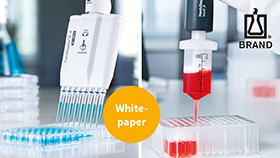FP7 under Investigation
Career strategies for young European scientists
by Ralf Schreck, Labtimes 01/2016
Page 1 | Page 2 | Page 3
Research and innovation are seen as key enablers for sustained economic and social prosperity. Tight research budgets force EU countries to reconsider their spending habits.
Horizon 2020 is the current research and innovation programme of the European Union. With close to €75 billion, it is one of the world’s largest public funding programmes. In the meantime, many scientists know the ropes and are able to tap into EU funds. For others, the struggle for EU money remains a nightmare with little prospect for success. During economically challenging times, it has also become more difficult to fill the EU coffers at Brussels. Cutting research budgets is no longer out of the question. Politicians as well as the taxpayer have to be convinced that there are additional benefits and added value from EU programmes. However, finding the right arguments to justify proper resource allocation is not that straightforward. An independent High Level Expert Group has now taken care of this issue and performed an in-depth evaluation of the already concluded 7th EU Framework Programme (FP7). Their recent report, available under http://ec.europa.eu/research/evaluations/index_en.cfm provides some interesting insights into EU-funded research. Here, Lab Times will introduce and discuss some of the key findings of the report, for which the full impact on the design of future EU programmes has yet to unfold.
FP7 in a nutshell
It was beyond the scope of the High Level Expert Group (HLEG) to address any detail of the past 7th EU Framework Programme (2007-2013) in their ex-post evaluation report. In order to understand the findings and recommendations made in the 121-page document, it is helpful to briefly summarise the cornerstones of FP7.
There have been four major funding lines called Specific Programmes: FP7-Cooperation, FP7-Ideas, FP7-People and FP7-Capacities. Altogether they incurred about 80% of the €55 billion budget. More than half of the funds were earmarked for FP7-Cooperation to foster trans-national collaborative projects in ten thematic areas, encompassing “Health”, “Food, Agriculture & Biotechnology” or “Nano-Production”. Scientific excellence programmes and awards were compiled under the umbrella FP7-Ideas, which with a €7.7 billion budget was driven by the newly established European Research Council (ERC). All sorts of mobility and career development activities, including the Marie Curie fellowships, were financed by the FP7-People Programme with about €5 billion, whereas the establishment and operation of large research infrastructures was enabled by FP7-Capacities. Cross-sectional activities aimed, for example, at specific societal challenges such as health or energy, at increased participation of small and medium enterprises, at a broader engagement of the society or at gender equality. Significant changes were introduced into the system of evaluation and monitoring during the preparation of FP7. It was agreed that there should be not only the annual monitoring of the implementation of the whole programme but, in addition, a 2009 progress report, an interim evaluation in 2010 and an ex-post evaluation of FP7 due in 2015. For evaluations, which were primarily the responsibility of different units within the European Commission itself, quantitative indicators and surveys of stakeholder opinions were applied more extensively.
Big data or tinkering with numbers
The European Commission and other organisations already published a plethora of analyses and reports on FP7, some of which have also been incorporated into the current HLEG report. Even for those not familiar with EU research, some numbers and facts are worth knowing. For example, tens of thousands of proposals had to be written and checked after submission for formal and eligibility criteria. No less than 136,000 submissions passed the initial hurdles and, with an overall success rate of 18%, almost every fifth application received funding in the end. Although 170 countries were involved in EU-funded projects, the EU member states and associated countries incurred 86% and 8% of participations, respectively. Interestingly, 38% of project members but just 19% of project coordinators were female. Marie Skłodowska-Curie actions (MCA) supported 50,000 researchers, of which 10,000 were PhD students. About a third of researchers with MCA fellowships were from outside the EU. Since carefully selected also for their scientific excellence, it is not too surprising that 95% were still employed two years after the end of the fellowship. In more than 4,500 ERC-funded projects, over 7,000 PhD students and 10,000 postdocs were involved. Out of 29,000 participating organisations, more than 70% were newcomers, meaning they did not take part in the previous FP6 Framework Programme.
Universities and research organisations were granted 70% of all research funds. Another quarter was almost equally split between larger companies and the so-called “smaller and medium enterprises” in the private sector. Novel simplification measures saved participants more than €550 million. At the end of 2015, more than 170,000 publications were the main scientific output of FP7. About a third of publications were among the top 5% of highly cited publications and therefore rated as high-impact. About seven papers have been published on average in each FP7-funded project. Open Access publishing was chosen for more than half of these publications. About €45 billion of funding was made available through open calls for proposals. EU member states benefitted by about €40 billion, €4 billion went to the 12 candidate and associated countries and just €644 million to the rest of the world. Germany and the UK were with €7.2 billion and €7 billion of research funds on top of the 28 EU member states, followed by France with €5.2 billion and Italy with €3.6 billion. Nine EU members just scored in the double-digit range, only being able to secure funds below €100 million.
The High Level Expert Group (HLEG) commenced operations in late 2014. The HLEG was comprised of 12 pre-eminent experts and chaired by Louise Fresco, the current President of the Executive Board of Wageningen University and Research Centre in the Netherlands. Members were engaged from universities as well as national academies and research councils. The business sector was represented by Sabine Herlitschka, Chief Executive Officer from Infineon Technologies Austria, and by Richard Pelly, the former Chief Executive of the European Investment Fund. The German Stefan Kuhlmann, a former Director of the Fraunhofer Institute for Systems & Innovation (ISI) Research Karlsruhe, now chair of the Department of Science, Technology and Policies Studies at the University of Twente, contributed more than three decades of expertise in studying research and innovation systems (please see also the accompanying interview with Stefan Kuhlmann on our website). The HLEG had access to a wide variety of public and non-public sources, including various databases, such as eCORDA, covering 25,000 FP7 projects and 29,000 organisations. In addition, more than 120 evaluation reports were made available by the Directorate-General for Research and Innovation of the European Commission. Last but not least, more than 50 experts from EU member states, the European Commission, stakeholder organisations, such as the European University Association, the League of European Research Universities or BUSINESSEUROPE as well as National Contact Points, were asked for their opinion.
Page 1 | Page 2 | Page 3
Last Changed: 28.04.2016







